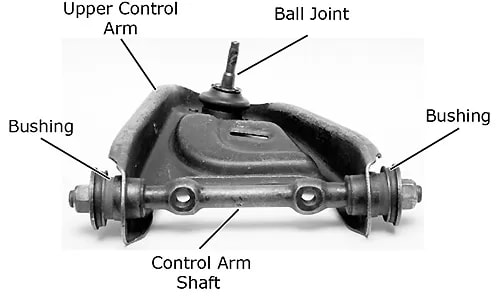What Are Shocks and Struts?
Discover the difference between struts and shocks on a car. Learn what struts and shocks are and the role that they play in your car in our guide.
Ball joints are one of the main parts of a vehicle’s suspension system.
They help with the operation of the suspension and steering systems, which is why it’s important to keep them in good condition.
But what is a ball joint, exactly?
Keep reading for more details about how these parts function, their importance to your vehicle and when they should be repaired or replaced!

You can have upper or lower ball joints, depending on the type of vehicle and suspension. The difference is usually that upper ball joints are non-load bearing (also known as “followers”), while lower ball joints are typically load-bearing.
Given the role they play in the suspension system, ball joints are going to experience daily wear and tear. At some point, they need to be replaced.
The constant movement of the ball stud can cause it to become loose and move around inside the socket. As a ball joint wears out, more space develops between the stud and the socket.
The safety of everyone in your vehicle could be at risk if ball joints become too worn out. In severe cases, the stud can pull out of the socket and cause a wheel to become partially disconnected from the vehicle.
Manufacturers often give specifications for the acceptable amount of space between the stud and the socket, which is good to familiarize yourself with. You can also watch for symptoms of worn ball joints, which include:

Ball joints typically last between 70,000 and 150,000 miles, depending on driving conditions and vehicle type. However, regular maintenance and timely inspections can help extend their lifespan.
Driving with a worn-out ball joint can result in severe steering and suspension issues, potentially leading to loss of control of the vehicle. This can increase the risk of accidents and cause damage to other components of the suspension system.
Yes, one common DIY method is to lift the vehicle and try to move the wheel out of its normal plane. Excessive play could indicate a worn ball joint.
Additionally, you can visually inspect for grease leaks or damaged rubber boots around the joint. However, if you don’t have the expertise to perform these duties, it’s best to leave it to a professional (or become an industry pro yourself).
To prolong the lifespan of ball joints, regularly check for wear and tear and ensure they are properly lubricated. Avoid driving on rough or uneven surfaces when possible and follow recommended maintenance schedules for your vehicle.
The Automotive Technology program at Universal Technical Institute (UTI) could help you gain the skills to diagnose and repair worn ball joints.
Not only will an education help when working on your own vehicle, you could also take the training you receive and apply it to an in-demand career in the industry.1 The Bureau of Labor Statistics projects more than 67,000 estimated average annual automotive technician job openings in the United States, according to the Bureau of Labor Statistics.41
UTI’s automotive program courses can teach you the fundamentals of repairing different parts of a vehicle, including steering and suspension service and repair. Hands-on labs and classroom learning combine to help give you the foundation of knowledge you need for an entry-level role in the field.18
Want to find out more? Request information online or call 1-800-834-7308 to connect with an Admissions Representative!
Universal Technical Institute of Illinois, Inc. is approved by the Division of Private Business and Vocational Schools of the Illinois Board of Higher Education.